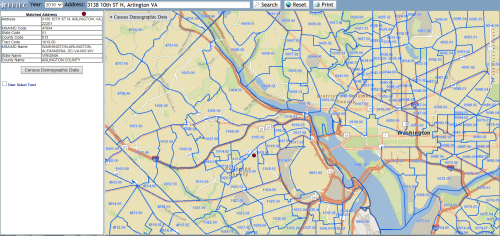Just When You Thought You Knew HMDA…CFPB Proposes HMDA Clarifications – Part I: New Geocoding Tool
Recently, the CFPB proposed clarifications to the 2015 HMDA rule that we will be blogging about in the upcoming weeks. Among these changes was a proposal for the addition of a new geocoding tool the CFPB plans to provide on its website. What is this magical geocoding tool, you ask? Well for starters, it is not a "new" tool… the FFIEC currently has a similar tool designed to help financial institutions meet their legal requirement to report information on mortgage, business, and farm loans.
Geocoding basically refers to the census tract in which a covered loan is located that must be provided for certain reported loan. See, 12 C.F.R. § 1003.4(a)(9). Geocoding systems allows credit unions to enter a property address to quickly obtain the census tract of the property. Current section 1003.4(a)(9) requires credit unions to report the census tract of the property that is securing or will secure a covered loan if the property is located in a metropolitan statistical area or metropolitan division in which the credit union has a home or branch office. This information is used to assess whether the reporting credit union is meeting the credit needs of the communities in which they operate.
As you may know, starting in 2018, credit unions that report HMDA data will have to do so through the CFPB instead of the FFIEC (see our previous HMDA blogs in case you need a refresher). So it only made sense that the CFPB created its own geocoding tool to facilitate this process as geocoding has often been regarded as a pain point for many financial intuitions because of how time consuming it is to obtain and review the information for accuracy.
As my colleague Jennifer mentioned in a blog a couple of week ago, the CFPB is pretty serious about obtaining accurate data. The current rule does provide that "bona fide errors" are not violations of Regulation C. See, 12 C.F.R. § 1003.6(b). The rule states that an incorrect entry for a census tract is deemed to be a bone fide error provided the credit union maintains reasonable procedures to avoid incorrectly inputting information into the geocoding tool. See, 12 C.F.R. § 1003.6(b)(2). The official interpretation also states that a credit union that obtains property-location information is responsible for ensuring that the information reported is correct. See, 12 C.F.R. § 1003, Supp. I, cmt. 1003.6(b)-1. This is why obtaining this information can be burdensome—on one hand we have the potential for human mistakes and on the other the credit union cannot rely on the information they obtain from geocoding vendors as they are ultimately responsible for its accuracy.
The proposed geocoding tool is meant to assist credit unions in meeting the requirement to file accurate data. However, tools like humans are not infallible (as we found out from the MLA database issue a while back). So what happens if the CFPB's tool fails and gives the credit union incorrect information? The Bureau proposed the addition of new comment 6(b)-2 to clarify that "obtaining census tract information for covered loans and applications from the Bureau’s geocoding tool is an example of a procedure reasonably adapted to avoid incorrect entries for a census tract number under current section 1003.6(b)(2)". This means that if the credit union messes up when inputting the information but has reasonable procedures or if the tool gives incorrect information, the credit union would not be found to have violated HMDA. Isn't that some regulatory relief!
Once the CFPB's geocoding tool is up, credit unions that plan to use it may want to start getting comfortable with it in case it differs from the FFIEC's tool and to ensure the credit union does not have to defend its policies and procedures for reasonableness because of human errors. Just for fun, I tried the current geocoding tool in the FFIEC's website and found the census tract for NAFCU offices for the year 2016. This is how it looks:

